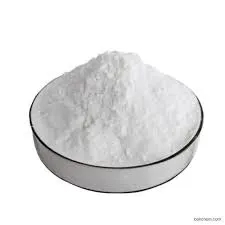- Afrikaans
- Albanian
- Amharic
- Arabic
- Armenian
- Azerbaijani
- Basque
- Belarusian
- Bengali
- Bosnian
- Bulgarian
- Catalan
- Cebuano
- Corsican
- Croatian
- Czech
- Danish
- Dutch
- English
- Esperanto
- Estonian
- Finnish
- French
- Frisian
- Galician
- Georgian
- German
- Greek
- Gujarati
- Haitian Creole
- hausa
- hawaiian
- Hebrew
- Hindi
- Miao
- Hungarian
- Icelandic
- igbo
- Indonesian
- irish
- Italian
- Japanese
- Javanese
- Kannada
- kazakh
- Khmer
- Rwandese
- Korean
- Kurdish
- Kyrgyz
- Lao
- Latin
- Latvian
- Lithuanian
- Luxembourgish
- Macedonian
- Malgashi
- Malay
- Malayalam
- Maltese
- Maori
- Marathi
- Mongolian
- Myanmar
- Nepali
- Norwegian
- Norwegian
- Occitan
- Pashto
- Persian
- Polish
- Portuguese
- Punjabi
- Romanian
- Russian
- Samoan
- Scottish Gaelic
- Serbian
- Sesotho
- Shona
- Sindhi
- Sinhala
- Slovak
- Slovenian
- Somali
- Spanish
- Sundanese
- Swahili
- Swedish
- Tagalog
- Tajik
- Tamil
- Tatar
- Telugu
- Thai
- Turkish
- Turkmen
- Ukrainian
- Urdu
- Uighur
- Uzbek
- Vietnamese
- Welsh
- Bantu
- Yiddish
- Yoruba
- Zulu
Ное . 18, 2024 14:24 Back to list
Tylosin 50 Injection for Effective Treatment in Veterinary Medicine
Tyloasin 50 Injection An Overview
Tylosin is a macrolide antibiotic that is primarily used in veterinary medicine to treat bacterial infections in various animal species. The injection formulation of Tylosin, particularly Tylosin 50 Injection, plays a crucial role in managing and preventing different infections, particularly those related to respiratory diseases, skin diseases, and gastrointestinal infections. This article aims to provide an overview of Tylosin 50 Injection, its uses, benefits, and considerations.
Mechanism of Action
Tylosin works by inhibiting bacterial protein synthesis. It binds to the 50S ribosomal subunit of bacteria, thereby blocking the exit tunnel of the ribosome, which prevents the formation of essential proteins needed for bacterial growth and replication. This mechanism allows Tylosin to be effective against a wide range of Gram-positive bacteria and some Gram-negative bacteria, making it useful for treating various infections in livestock and companion animals.
Indications for Use
Tylosin 50 Injection is indicated for the treatment of respiratory diseases caused by bacteria in animals such as cattle, pigs, and poultry. Common conditions treated with Tylosin include pneumonia, pleuropneumonia, and other respiratory tract infections. Additionally, Tylosin has also been utilized in cases of skin infections, mastitis in dairy cows, and enteritis in swine. In poultry, it has been shown to be effective against chronic respiratory disease, a significant concern in avian health.
tylosin 50 injection

Dosage and Administration
The dosage of Tylosin 50 Injection varies based on the species being treated, the severity of the infection, and veterinary recommendations. It is essential to follow the veterinarian's guidance on dosage and treatment duration to avoid the risk of antibiotic resistance and potential side effects. Tylosin is usually administered via intramuscular or subcutaneous injection, ensuring proper adherence to injection protocols to maximize efficacy and minimize discomfort to the animal.
Benefits and Safety Concerns
One of the primary benefits of Tylosin 50 Injection is its effectiveness in treating a variety of bacterial infections, which can significantly improve animal health, productivity, and overall welfare. However, as with all antibiotics, there are considerations regarding the development of antibiotic resistance, the potential for adverse reactions, and the importance of proper usage including adherence to withdrawal times before slaughter or milk production. This ensures that antibiotic residues do not enter the human food supply.
Conclusion
Tylosin 50 Injection is a valuable tool in veterinary medicine for treating bacterial infections across multiple animal species. Its broad-spectrum activity, ease of administration, and positive outcomes in improving animal health make it an important antibiotic. However, responsible use, guided by veterinary advice, is crucial to mitigate risks associated with antibiotic resistance and ensure the safety of food products derived from treated animals. As the veterinary landscape continues to evolve, the focus on responsible antibiotic use remains paramount for both animal health and public safety.
-
Guide to Oxytetracycline Injection
NewsMar.27,2025
-
Guide to Colistin Sulphate
NewsMar.27,2025
-
Gentamicin Sulfate: Uses, Price, And Key Information
NewsMar.27,2025
-
Enrofloxacin Injection: Uses, Price, And Supplier Information
NewsMar.27,2025
-
Dexamethasone Sodium Phosphate Injection: Uses, Price, And Key Information
NewsMar.27,2025
-
Albendazole Tablet: Uses, Dosage, Cost, And Key Information
NewsMar.27,2025













